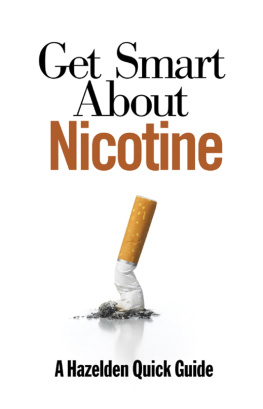Iain Gately - Tobacco: A Cultural History of How an Exotic Plant Seduced Civilization
Here you can read online Iain Gately - Tobacco: A Cultural History of How an Exotic Plant Seduced Civilization full text of the book (entire story) in english for free. Download pdf and epub, get meaning, cover and reviews about this ebook. year: 2007, publisher: Open Road + Grove/Atlantic, genre: Religion. Description of the work, (preface) as well as reviews are available. Best literature library LitArk.com created for fans of good reading and offers a wide selection of genres:
Romance novel
Science fiction
Adventure
Detective
Science
History
Home and family
Prose
Art
Politics
Computer
Non-fiction
Religion
Business
Children
Humor
Choose a favorite category and find really read worthwhile books. Enjoy immersion in the world of imagination, feel the emotions of the characters or learn something new for yourself, make an fascinating discovery.

- Book:Tobacco: A Cultural History of How an Exotic Plant Seduced Civilization
- Author:
- Publisher:Open Road + Grove/Atlantic
- Genre:
- Year:2007
- Rating:5 / 5
- Favourites:Add to favourites
- Your mark:
Tobacco: A Cultural History of How an Exotic Plant Seduced Civilization: summary, description and annotation
We offer to read an annotation, description, summary or preface (depends on what the author of the book "Tobacco: A Cultural History of How an Exotic Plant Seduced Civilization" wrote himself). If you haven't found the necessary information about the book — write in the comments, we will try to find it.
Long before Columbus arrived in the New Word, tobacco was cultivated and enjoyed by the indigenous inhabitants of the Americas, who used it for medicinal, religious, and social purposes. But when Europeans began to colonize the American continents, it became something else entirelya cultural touchstone of pleasure and success, and a coveted commodity that would transform the world economy forever.
Iain Gatelys Tobacco tells the epic story of an unusual plant and its unique relationship with the history of humanity, from its obscure ancient beginnings, through its rise to global prominence, to its current embattled state today. In a lively narrative, Gately makes the case for the tobacco trade being the driving force behind the growth of the American colonies, the foundation of Dutch trading empire, the underpinning cause of the African slave trade, and the financial basis for victory in the American Revolution. Well-researched and wide-ranging, Tobacco is a vivid and provocative look at the surprising roles this plant has played in the culture of the world.
Ambitious . . . informative and perceptive . . . Gately is an amusing writer, which is a blessing. The Washington Post
Documents the resourcefulness with which human beings of every class, religion, race, and continent have pursued the lethal leaf. The New York Times Book Review
Iain Gately: author's other books
Who wrote Tobacco: A Cultural History of How an Exotic Plant Seduced Civilization? Find out the surname, the name of the author of the book and a list of all author's works by series.








